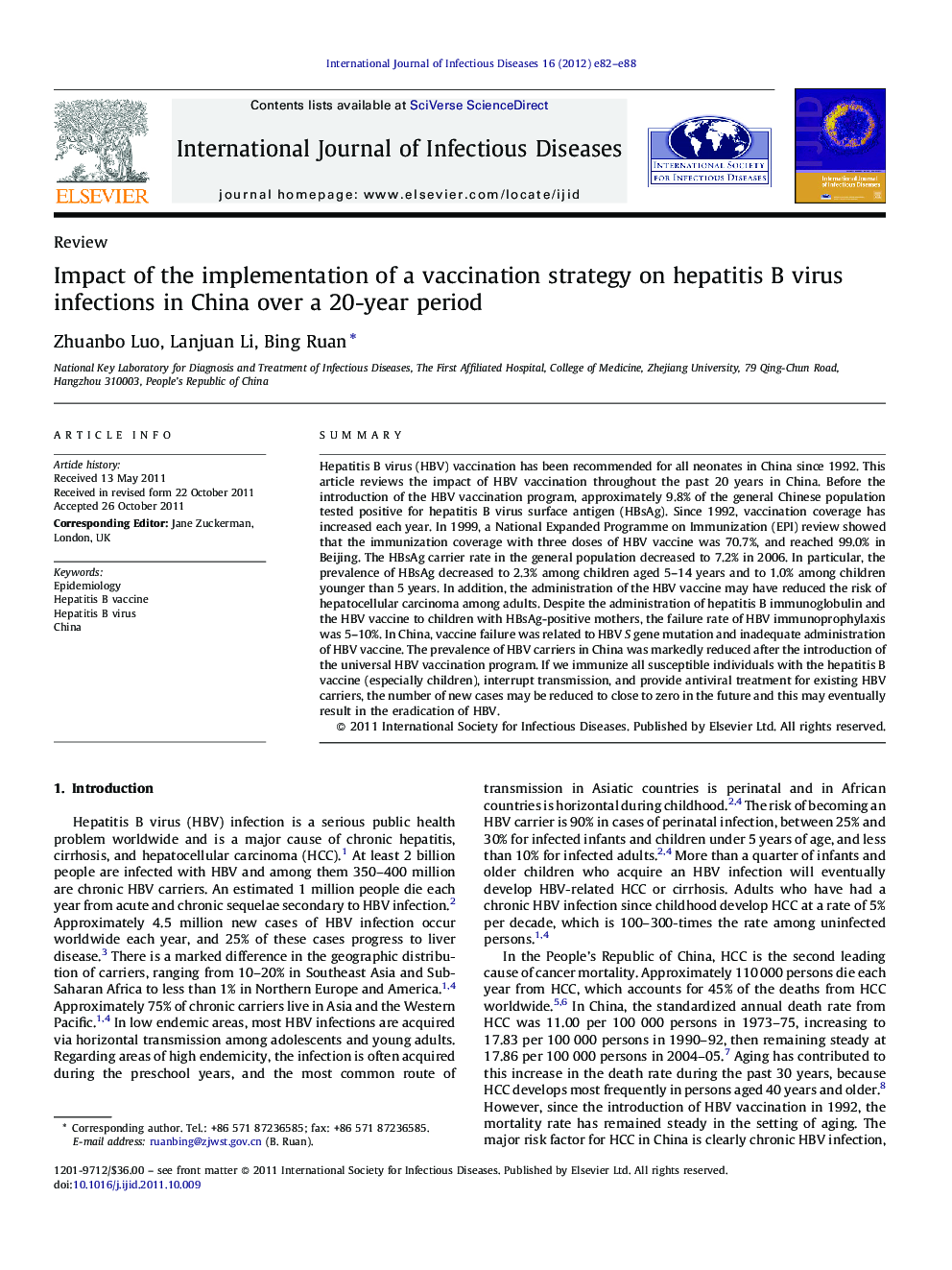| Article ID | Journal | Published Year | Pages | File Type |
|---|---|---|---|---|
| 3363196 | International Journal of Infectious Diseases | 2012 | 7 Pages |
SummaryHepatitis B virus (HBV) vaccination has been recommended for all neonates in China since 1992. This article reviews the impact of HBV vaccination throughout the past 20 years in China. Before the introduction of the HBV vaccination program, approximately 9.8% of the general Chinese population tested positive for hepatitis B virus surface antigen (HBsAg). Since 1992, vaccination coverage has increased each year. In 1999, a National Expanded Programme on Immunization (EPI) review showed that the immunization coverage with three doses of HBV vaccine was 70.7%, and reached 99.0% in Beijing. The HBsAg carrier rate in the general population decreased to 7.2% in 2006. In particular, the prevalence of HBsAg decreased to 2.3% among children aged 5–14 years and to 1.0% among children younger than 5 years. In addition, the administration of the HBV vaccine may have reduced the risk of hepatocellular carcinoma among adults. Despite the administration of hepatitis B immunoglobulin and the HBV vaccine to children with HBsAg-positive mothers, the failure rate of HBV immunoprophylaxis was 5–10%. In China, vaccine failure was related to HBV S gene mutation and inadequate administration of HBV vaccine. The prevalence of HBV carriers in China was markedly reduced after the introduction of the universal HBV vaccination program. If we immunize all susceptible individuals with the hepatitis B vaccine (especially children), interrupt transmission, and provide antiviral treatment for existing HBV carriers, the number of new cases may be reduced to close to zero in the future and this may eventually result in the eradication of HBV.
